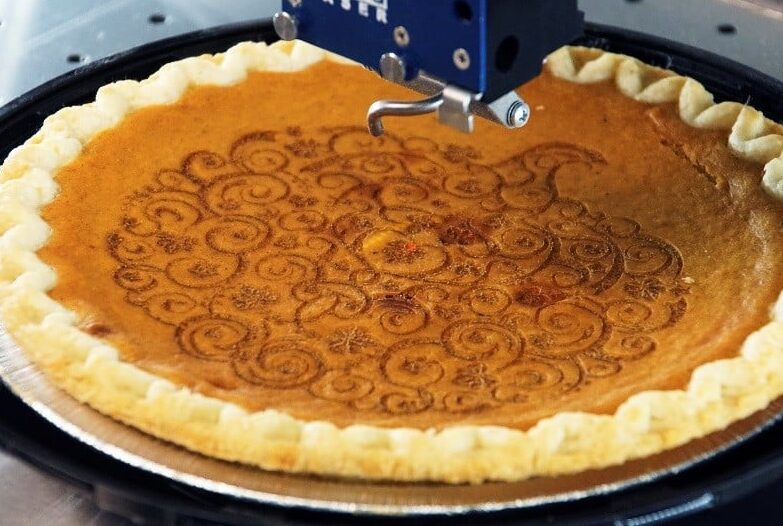Preface: Food manufacturing equipment and food safety
The 315 party just passed this year revealed another food safety issue, that is, “Thai fragrant rice” was exposed to be blended from essence, and the aroma was all based on technology and ruthlessness.
At the 315 party every year, some food safety problems will be exposed more or less. For example, Laotan pickled Chinese cabbage, which has been exposed for 22 years, is the “earthen pickled Chinese cabbage”. Workers not only tread on pickled Chinese cabbage barefoot, but even throw cigarette butts on pickled Chinese cabbage.

The issue of food safety has been an urgent need to be addressed in China in recent years. To ensure food safety, we must first trace it from the source.
The improvement of production environment, production equipment, and technology is the foundation for ensuring food safety.
Food machinery is one of the products that come into direct contact with it during food production, and its quality directly affects food safety. Due to the fact that it is impossible to estimate how many goods produced by unqualified machinery have been purchased and consumed by consumers, the quality of food machinery directly affects food safety and more importantly, people’s health. For a long time, the food machinery industry in China has been facing an awkward situation of being small but scattered, large but not precise, and the core technology of products is difficult to compete with that of developed countries. To remain invincible in the international market, food production must achieve mechanization, automation, specialization, and scale. It must be freed from traditional manual labor and workshop operations, and improve hygiene, safety, and production efficiency.
The safety and hygiene of food manufacturing equipment has a significant impact on the health of consumers, which puts forward higher requirements for food machinery manufacturing enterprises. It should be practical and convenient, and also meet the requirements of high cleanliness.
So how should these problems be solved? Let’s introduce how laser cutting machines can improve the problems in food manufacturing equipment.
Application of laser cutting in food manufacturing equipment
Food manufacturing equipment (also known as food machinery) refers to the mechanical equipment used in the process of processing food raw materials into food (or semi-finished products). Mainly divided into packaging equipment and food processing machinery.
The performance of the required food equipment varies greatly for different types of food. If customized according to traditional processing methods, multiple processes such as mold opening, punching, and plate cutting are required, resulting in low work efficiency, high mold consumption, and high cost, which seriously hinder the innovative development of the food machinery industry.
In addition, in order to ensure that food production meets high cleanliness requirements, it is necessary to achieve mechanization, automation, specialization, and scale. It is necessary to liberate from traditional manual labor and workshop operations, and improve hygiene, safety, and production efficiency.
The manufacturing of food machinery and equipment cannot be separated from the processing of plates and tubes. Currently, the most efficient and mainstream equipment for plate and tube processing is laser cutting machines, which effectively promotes the development of the food machinery industry.
Advantages of laser cutting in food manufacturing equipment
Advantage. 1 Cleanliness and hygiene
The laser cutting machine is a non-contact processing, which is clean and sanitary, suitable for the production of food machinery, and is the basis for ensuring food safety.
Advantage. 2 High processing quality
The slit of laser cutting is generally 0 10~0.20mm, high accuracy, and laser cutting surface without burrs, can cut various thick plates, with a very smooth cross-section, without the need for secondary processing.
Advantage 3 Low processing cost
The manufacturing cost of molds for large products required by food machinery is very high. Laser cutting does not require any molds, and can completely avoid edge collapse caused by material punching and shearing, greatly reducing production costs and improving the quality of food machinery.
Advantage: High processing efficiency
Laser cutting is easy to operate and fast in cutting speed. As long as the product drawing is formed, laser processing can be carried out immediately, which can obtain the physical objects of new products in a short time, effectively improving the production efficiency of food machinery.
Compared to traditional processing techniques, fiber laser cutting machines have prominent advantages in the production of food machinery. Traditional processing methods require multiple processes such as mold opening, stamping, plate cutting, and bending, resulting in low efficiency, high mold consumption, and high usage costs, which seriously hinder the pace of innovation and development in the food machinery industry. Laser cutting is a non-contact processing that ensures the safety and hygiene of food machinery. The cutting gap and cutting surface are smooth, without secondary processing, and the cutting speed is fast. No mold manufacturing is required. After the drawing is formed, it can be processed, effectively promoting the upgrading of food machinery, while greatly reducing the production cost of mechanical manufacturing. I believe that in the future, laser technology will shine brilliantly in the food machinery industry.
About HGSTAR: HGSTAR is is a sub-brand of HGTECH.HGTECH the pioneer and leader of laser industrial application in China, and the authoritative provider of global laser processing solutions. We have comprehensively arranged laser intelligent machine, measurement and automation production lines, and smart factory construction to provide overall solutions for intelligent manufacturing.

